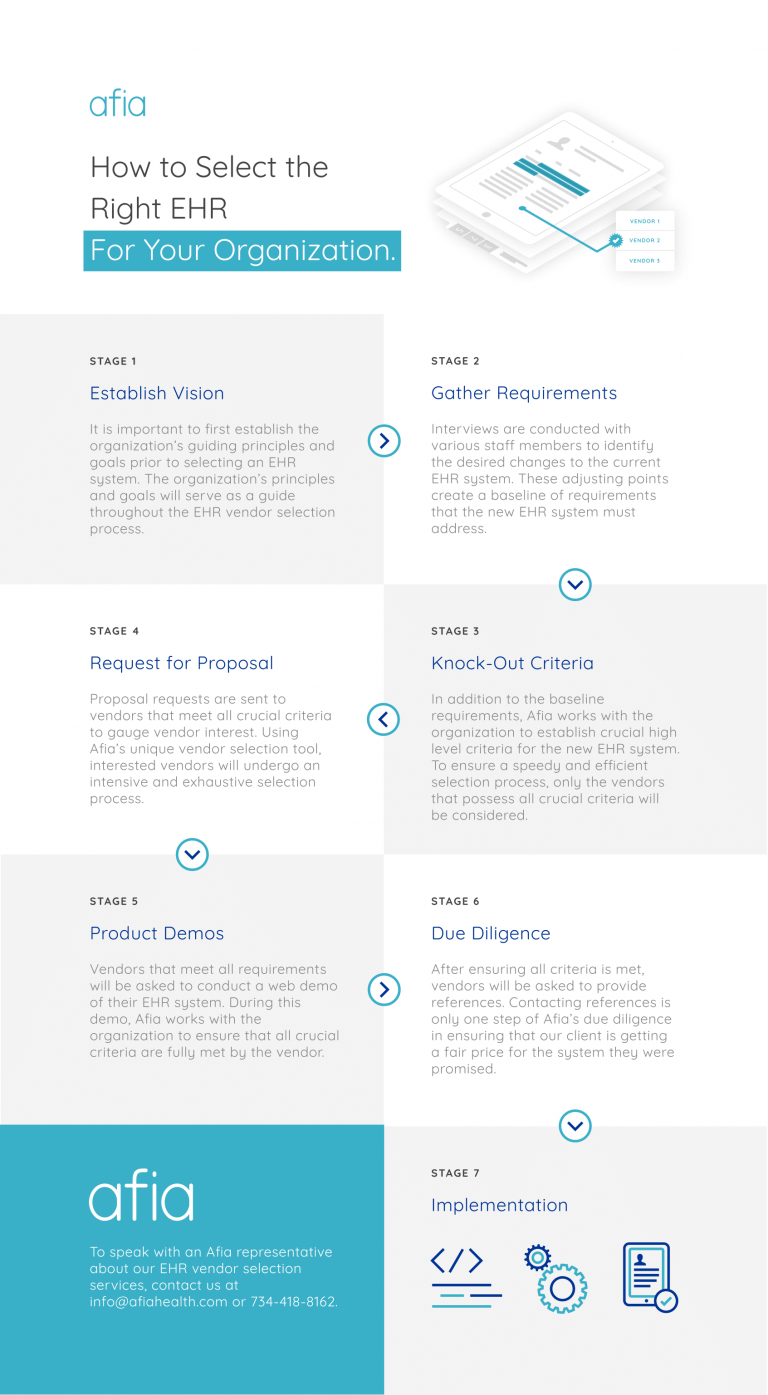In the initial excitement of getting a new Electronic Health Record (EHR) system, it can be tempting to dive in head first. After all, a new system can improve patient outcomes, add much-needed security to patient data, and improve productivity.
However, most of the time it’s best to take a step back. The goal is to lay out a process that will help to protect you from common failures and ensure you get the most out of your EHR. By taking the time upfront to understand your needs, you’ll be able to chart a smoother course to a successful EHR implementation.
Give me six hours to chop down a tree and I will spend the first four sharpening the axe.
– Abraham Lincoln
Determining your organization’s readiness for a project with the size and scope of an EHR implementation is the foundation of a successful project. We particularly love the concept of the quote above at Afia. So much of the critical work comes before the implementation; during needs analysis and vendor selection. We’ve seen the ‘ax sharpening’ phase shortened or skipped time and time again in the industry, and we’ve seen the unfortunate effects of it as well.
A thorough EHR Assessment process ensures that you can identify the problems that your organization seeks to solve and starts the process of capturing the essential requirements of your team. Rushing through this process can result in years of rework on the backend of the project. Skipping due diligence is responsible for many of the failed implementations we hear about far too often.
Make sure that you can answer the following questions before you decide to engage a vendor and begin the implementation process:
If your EHR Leadership team is not in agreement on the answers to the questions above, you should consider sharpening the ax awhile longer. Consensus and clarity are difficult to achieve, so plan a significant amount of time to work through each question. This process prevents staff turnover, increases system adoption rates, and sets the tone of the project throughout the entire organization.
The vendor selection process is an extension of your readiness assessment. You have your leadership team, you know your vision, your goals, and the key problems you want to solve. So what is next?
This process is all about building from your organization’s requirements and matching them to the vendor that best supports your organization going forward. The more thorough you are in each of these steps up front, the better the vendor can explain how they can meet your needs in their response and as a business partner for years to come.
 Ultimately, all the details need to be documented and organized so you can make sure that you have a sound contract in place to support your implementation. The due diligence done during this process ensures that everyone is on the same page and the details allow you to identify the vendor truly best for your team.
Ultimately, all the details need to be documented and organized so you can make sure that you have a sound contract in place to support your implementation. The due diligence done during this process ensures that everyone is on the same page and the details allow you to identify the vendor truly best for your team.
Interested in more information on EHR Implementations? This article is part 1 of a series on “How to Implement an EHR” successfully. Read the rest of the series here: Part 2 – How to create an EHR Implementation Plan and Part 3 – Common EHR Implementation Mistakes and How to Avoid Them.
All Thought Leadership